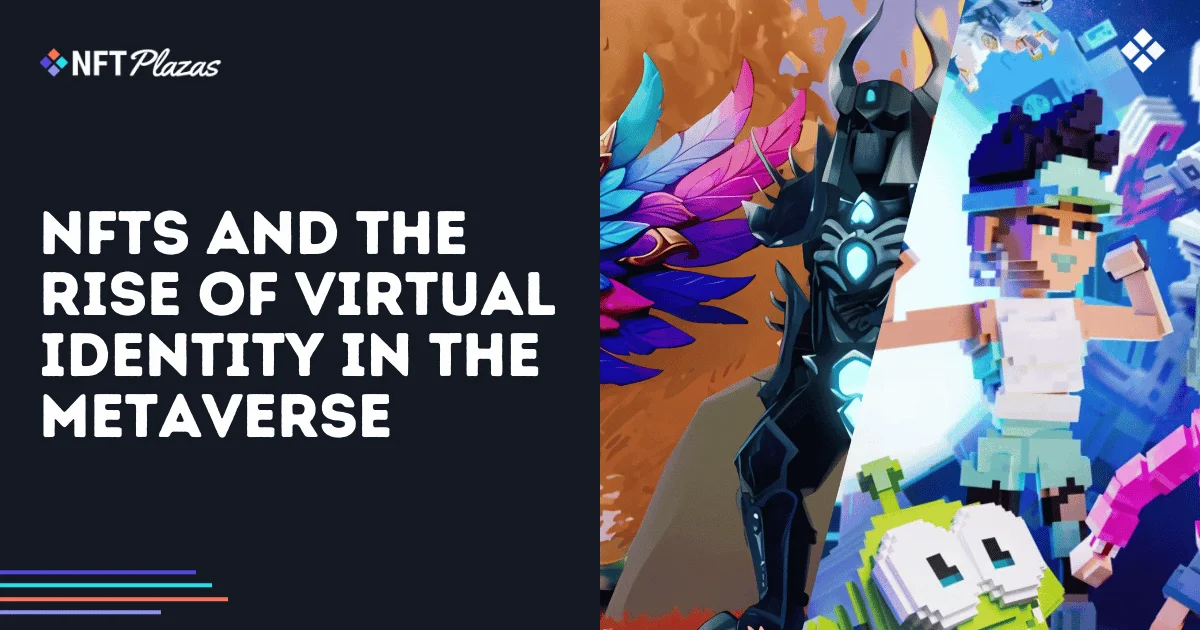The metaverse is no longer just a futuristic concept—it’s here, it’s now, and NFTs are at the heart of it. These digital assets have quickly become tools for creating and expressing identity in virtual worlds.Metaverse platforms like The Sandbox and Decentraland have made it possible for users to own and personalise their avatars, virtual properties, and experiences using their own NFT-backed assets.But NFTs are not just about cool avatars or flashy items, at least not anymore—they now represent the evolution of how users define and interact with identity in a digital-first society. Source: DecentralandNFTs as the Building Blocks in the MetaverseAt their core, NFTs offer something more: proof of ownership in a space that is entirely virtual.According to the recent BGA 2024 report, the principle of asset ownership continues to drive blockchain gaming, with 71.1% of industry professionals recognizing it as the leading benefit of the technology—and it’s not hard to see why.Unlike traditional digital assets that live and die on individual platforms, NFTs allow for real, transferable ownership and developments like dynamic NFTs and soulbound tokens (SBTs) take these benefits even further.Imagine an NFT that grows or evolves as you achieve milestones in a game or complete significant tasks in the metaverse. These aren’t just digital collectibles—they’re personalised markers of your journey, adding layers of meaning to one’s virtual life.The concept of interoperable NFTs is also gaining traction, allowing users to carry their assets across multiple platforms. This paves the way for a more unified metaverse experience, where digital identity and ownership transcend individual ecosystems.With gaming giants like Ubisoft and Square Enix diving into decentralized gaming through titles like Captain Laserhawk: The G.A.M.E. and Symbiogenesis, NFTs are becoming integral to gameplay and storytelling, bridging the gap between traditional and blockchain-based experiences. Source: The SandboxExpanding Economies and Overcoming ChallengesBeyond gaming, the metaverse has also expanded into gamified environments that include gambling.Many virtual casinos and blockchain-based games now offer users the chance to wager and win NFT-backed assets or cryptocurrencies, introducing new ways to engage with virtual economies.In this context, meme cryptocurrencies have carved out an important niche. Acting as tools for transactions and rewards, bringing a playful yet practical element to these platforms.Solana’s co-founder, Anatoly Yakovenko, has even called memecoins a testing ground for blockchain innovation, noting how their activity has driven solutions to challenges like network congestion. These advancements have strengthened blockchain networks, benefiting decentralized applications, NFTs and metaverse platforms.Some of the best meme cryptocurrency projects are already incorporating innovative ways to combine entertainment and blockchain technology, making virtual gambling more engaging and easily accessible.Yet despite the growing adoption of NFTs, many challenges remain.The BGA report points to issues such as onboarding complexity and misconceptions surrounding blockchain technology where a large portion of survey respondents—53.9%—cited onboarding as a key barrier to growth. However, innovations in user-friendly interfaces and the gamification of entry points have slowly begun to address these concerns.With advancements in blockchain infrastructure and the growing popularity of decentralized governance models, the role of NFTs in digital identity is expected to expand. As highlighted in the BGA report, emerging innovations such as interoperable NFTs—which allow assets to transition seamlessly across platforms—are likely to become the norm.
Source link


